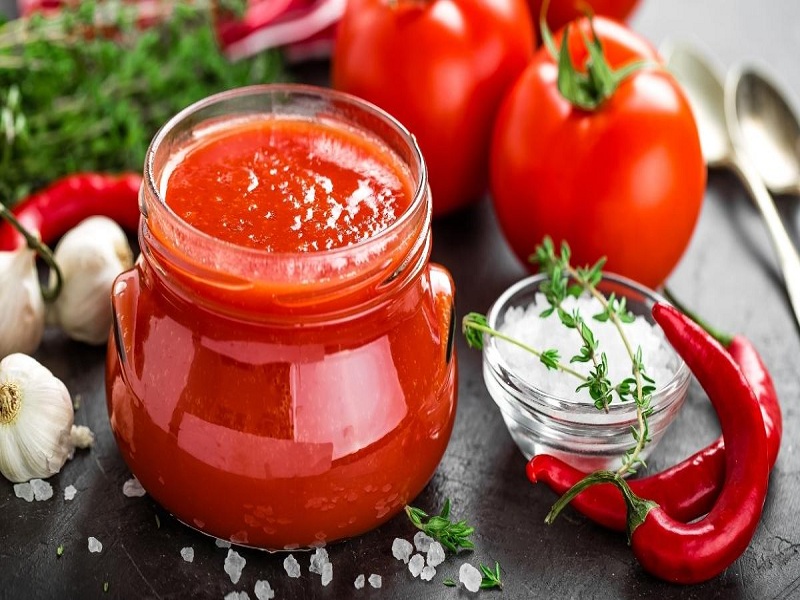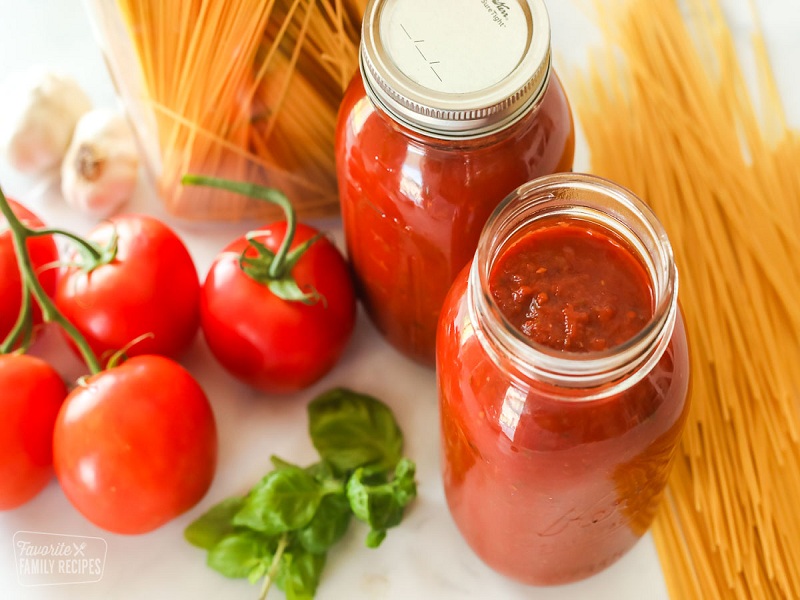Summary: Safe Tomato Paste
Tomato paste is a popular ingredient used in various cuisines around the world. It adds depth, richness, and acidity to dishes and is known for its concentrated tomato flavor. However, ensuring the safety of tomato paste is essential, as it can be prone to contamination and spoilage if not handled properly.
One of the main concerns with tomato paste is the presence of harmful microorganisms, such as bacteria and molds. These can cause foodborne illnesses and spoil the product, rendering it unfit for consumption. To ensure the safety of tomato paste, several measures need to be taken during its production, storage, and handling.
The first step in producing safe tomato paste is selecting high-quality tomatoes. It is crucial to use fresh, ripe tomatoes that are free from any visible signs of damage or spoilage. The tomatoes should be thoroughly washed and sorted to remove any debris or contaminants before processing.
The next step is the processing of tomatoes into paste. There are two common methods for this: boiling and steam evaporation. In both processes, the tomatoes are first crushed or pureed to obtain a smooth consistency. Then, the pulp is heated to kill any bacteria present in the tomatoes and to concentrate the flavor. This heating process must be done at high temperatures to ensure that harmful microorganisms are destroyed.
Once the tomato paste is obtained, it needs to be properly stored to maintain its safety and quality. It is crucial to store tomato paste in a cool, dry place away from direct sunlight. The containers should be tightly sealed to prevent air and moisture from getting in, which can lead to spoilage. Additionally, it is advisable to use the tomato paste within the recommended shelf life mentioned on the packaging.
During transportation and distribution, proper handling and storage practices should be followed to avoid temperature abuse. Tomato paste is highly perishable and can spoil quickly if exposed to high temperatures for prolonged periods. It is essential to maintain a cold chain and ensure that the product is stored and transported at appropriate temperatures.
Consumers also play a significant role in ensuring the safety of tomato paste. It is essential to check the packaging for any signs of damage or tampering before purchase. If the packaging is bulging, leaking, or appears damaged, it is best to avoid buying the product. Additionally, consumers should follow the recommended storage and usage instructions provided on the packaging to maintain the safety and quality of the tomato paste.

In recent years, there have been advancements in technology and packaging materials that contribute to the safety and shelf life of tomato paste. For instance, some manufacturers now use aseptic packaging, which involves sterilizing the tomato paste and packaging materials separately before filling and sealing. This method helps to prevent contamination and extends the shelf life of tomato paste.
Furthermore, some companies have started using advanced food safety systems, including Hazard Analysis and Critical Control Points (HACCP) and Good Manufacturing Practices (GMP). These systems ensure that all stages of the tomato paste production process are monitored, controlled, and documented to prevent any potential hazards.
In conclusion, ensuring the safety of tomato paste is crucial to protect consumers from foodborne illnesses and maintain product quality. It starts with selecting high-quality tomatoes and processing them using proper heating techniques to eliminate harmful microorganisms. The storage, transportation, and handling of tomato paste should be done under appropriate conditions to prevent spoilage. Consumers also play a significant role in maintaining the safety of tomato paste by following recommended storage and usage instructions. With advancements in technology and food safety systems, the production of safe tomato paste has become more efficient and effective, providing consumers with a reliable and high-quality product.Title: Ensuring Safe Tomato Paste Production: Best Practices for Businesses
Introduction:
Tomato paste is a staple ingredient used in countless dishes around the world. However, ensuring the safety of tomato paste is crucial for businesses in the food industry. Proper handling and adherence to food safety standards are essential to prevent contamination and maintain the quality of the product. In this article, we will discuss ten key practices that businesses should adopt to ensure the production of safe tomato paste.
1. Implement a Food Safety Management System:
To ensure the production of safe tomato paste, businesses should implement a robust Food Safety Management System (FSMS). This system should be based on internationally recognized standards such as Hazard Analysis and Critical Control Points (HACCP) and Good Manufacturing Practices (GMP). By having an effective FSMS in place, businesses can identify and control potential hazards throughout the production process.
2. Source Quality Raw Materials:
The foundation of safe tomato paste production lies in sourcing high-quality raw materials. Businesses should establish strong relationships with trusted suppliers who can consistently provide fresh, ripe tomatoes free from any visible signs of damage or spoilage. Regular testing and inspection of raw materials can help identify any potential risks and ensure only quality tomatoes are used.

3. Employ Good Agricultural Practices (GAPs):
Businesses should encourage their tomato suppliers to follow Good Agricultural Practices (GAPs). This includes measures to control pests and diseases, proper irrigation, and safe use of fertilizers and pesticides. Implementing GAPs can reduce the risk of pesticide residue presence in the tomatoes and promote overall safety and sustainability in the supply chain.
4. Adequate Washing and Sorting:
Upon receiving the tomatoes, it is crucial to perform thorough washing and sorting. This helps remove any dirt, debris, or potential contaminants present on the surface of the tomatoes. Employing automated washing equipment and visual inspection systems can enhance the efficiency and effectiveness of this process.
5. Rigorous Processing Techniques:
During the processing stage, it is imperative to employ rigorous techniques to ensure the safety of tomato paste. High-temperature heating and pasteurization methods should be utilized to destroy harmful microorganisms while concentrating the tomato flavor. Temperature and time controls should be carefully monitored and documented to maintain consistency and ensure product safety.
6. Proper Packaging:
Choosing the right packaging is essential for preserving the safety and quality of tomato paste. Aseptic packaging, which involves sterilizing both the product and packaging materials separately before filling and sealing, can significantly extend the shelf life of tomato paste while preventing contamination. High-quality, tamper-proof containers should be used to ensure the integrity of the product.
7. Adequate Storage and Distribution:

Proper storage and distribution are crucial to maintaining the safety of tomato paste. Businesses should ensure that the storage facilities maintain appropriate temperatures and humidity levels to prevent spoilage. A well-managed inventory rotation system should be implemented to ensure that older batches of tomato paste are used first to minimize the risk of expiry.
8. Train Employees on Food Safety Practices:
Businesses should prioritize employee training to ensure that every member of the production team understands and adheres to food safety practices. Training programs should cover proper hygiene practices, personal protective measures, and correct handling and storage procedures for tomato paste. Regular refresher courses can help reinforce these practices and keep employees informed of any updates in food safety regulations.
9. Regular Quality Control Inspections:
Routine quality control inspections should be conducted to monitor and evaluate the safety of tomato paste. Regular testing for microorganisms, pH levels, and any potential contaminants should be performed by qualified laboratories. These periodic inspections provide valuable insights into the overall safety and quality of the product, helping businesses make necessary improvements if required.
10. Stay Updated with Food Safety Regulations:
To ensure compliance and maintain a strong track record in food safety, businesses must stay updated with the latest food safety regulations and requirements. This involves closely monitoring regulatory authorities, participating in relevant industry events, and maintaining strong relationships with food safety experts. Regular internal audits can also help identify and rectify any gaps in compliance.
Conclusion:
Safe tomato paste production is vital for businesses in the food industry to protect consumers, maintain product quality, and uphold their reputation. By implementing robust food safety management systems, sourcing quality raw materials, employing rigorous processing techniques, and adhering to proper handling, storage, and distribution practices, businesses can ensure the production of safe tomato paste. Regular inspections, employee training, and staying updated with food safety regulations also play critical roles in maintaining product safety. With these best practices in place, businesses can confidently provide consumers with a trustworthy and high-quality tomato paste product.








